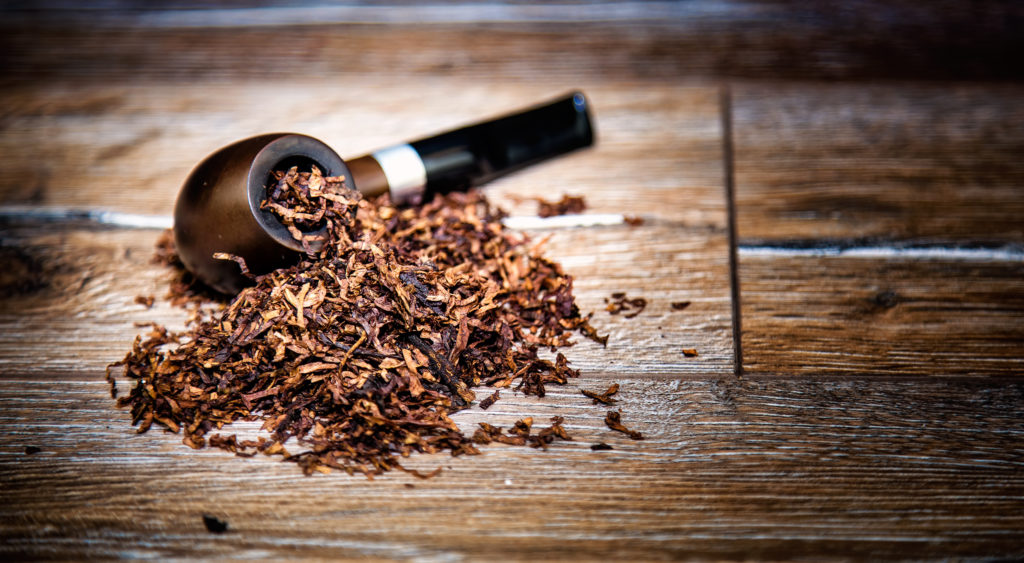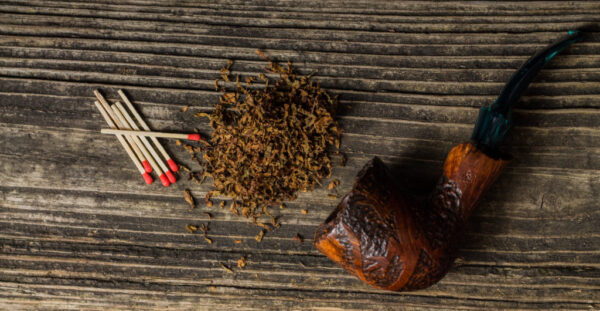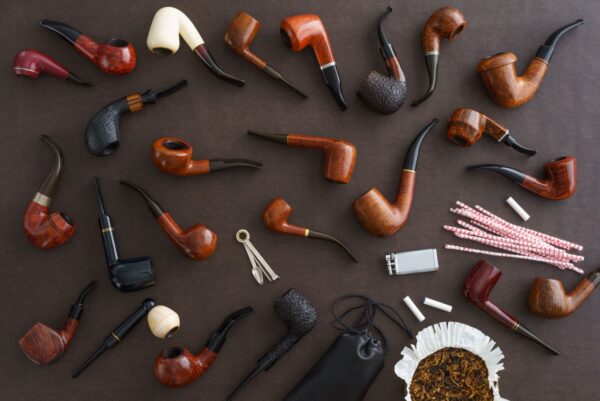The world of tobacco pipes is a captivating realm filled with a variety of shapes, materials, and designs that cater to the unique preferences and tastes of pipe enthusiasts. The most common types of tobacco pipes each brings its own character, smoking experience, and aesthetic appeal. Whether you’re a seasoned pipe smoker or a curious beginner, understanding the different types of pipes available can help you navigate this diverse landscape and find the perfect pipe that suits your style.
From the classic elegance of briar pipes to the ornate beauty of meerschaum, and the rustic charm of corn cob pipes, the selection is vast and varied. Each pipe type offers distinct characteristics that contribute to the overall smoking experience, including heat resistance, airflow, and flavor enhancement. Exploring the different types of pipes allows you to appreciate the craftsmanship, history, and artistry behind each design.
The Most Common Types of Tobacco Pipes
In this guide, we will delve into the most common types of tobacco pipes and explore some of the most common types. We will discuss the materials used, the unique features of each pipe type, and the qualities that make them stand out. Whether you’re interested in the classic allure of briar, the historical significance of clay, or the whimsical appeal of churchwarden pipes, this guide will provide you with a glimpse into the diverse array of pipe varieties available.
Remember, choosing a pipe is a personal journey that combines functionality, aesthetics, and personal taste. By familiarizing yourself with the different types of pipes and their characteristics, you can make an informed decision that aligns with your smoking preferences and brings you a delightful pipe smoking experience. So, let us embark on this exploration of the fascinating world of tobacco pipes, where tradition, craftsmanship, and personal style converge to create timeless pieces of art and companions for moments of relaxation and contemplation.
Briar Pipes
Briar pipes are the most popular and widely recognized type of tobacco pipes. They are crafted from briarwood, which comes from the root burl of the Mediterranean Erica arborea plant. Briarwood is highly regarded for its heat resistance, durability, and ability to enhance the tobacco flavors. Briar pipes come in various shapes, such as Billiard, Dublin, and Bulldog, and offer a balance of elegance and functionality.
The most popular pipe made today, the briar pipe, is good for two primary reasons: it’s fire-resistant properties and the dry, cool smoke it produces thanks to its porous nature. Briar is harvested in the Mediterranean from the roots small shrubs called the Erica Arborea. Brylon may be the sturdiest material in the pipe world, but no type is quite as versatile as briar.
Another advantage is its burl, which absorbs the moisture just like the tree itself does in the natural setting. When you light a pipe, you create moisture. Most artisan pipe makers prefer plateau briar burls (taken from the out part of the burl) because of their superior graining to ebauchon (taken mostly from the center).
Brylon Pipes
Brylon pipes were first developed in the 1960s, originally as a cheaper alternative to briar pipes. Brylon is made up of a nylon and wood composite and they’re tough as nails; they can last a lifetime—a real novelty.
Brylon pipes also sport a resin material resembling sawdust which is, while easy to heat up, practically immune to scratches, dents, and other damages common with tobacco pipes made from less durable material.
Meerschaum Pipes
Meerschaum, meaning “sea foam” in German, is a soft, porous mineral used to carve intricate and ornate tobacco pipes. Meerschaum pipes are known for their lightweight nature, ability to absorb moisture, and ability to develop a beautiful patina over time with repeated smoking. These pipes offer a cool and dry smoke, allowing the flavors of the tobacco to shine. Meerschaum pipes often feature intricate carvings and unique designs that make them true works of art.
You may wonder why Meerschaum pipes are regarded as the best tasting out there. In its natural state in which it’s harvested in Turkey, Meerschaum is extremely pliable, which allows for intricate, creative designs and expert craftsmanship before curing, hardening, and polishing.
These pipes aren’t just eye-catching, they’re also highly functional and long-lasting. The porous material in these pipes acts as a natural filter by absorbing tars and moisture. In fact, you’ll see it transition from stark white to light brown as it garners flavors from the smoke, improving its taste over time.
Corn Cob Pipes
Corn cob pipes are a popular choice among beginners and seasoned smokers alike. As the name suggests, these pipes are made from dried corn cobs and are known for their affordability and light weight. Corn cob pipes offer a neutral flavor, making them ideal for trying new tobacco blends without interference. They are often recommended for sampling different tobaccos or as a casual, everyday pipe.
If you’re new to the pipe game, these inexpensive varieties are a perfect place to start your journey. They’re highly effective and require no break in period. Corn cob pipes are primed and ready to be used as soon as you pick one up.
You don’t have to worry about using an unpleasant tobacco and ruining them either, which makes them great for tobacco sampling purposes. Many people keep corn cob pipes on hand during their travels for this reason. Most are manufactured right here in the USA.
Clay Pipes
Clay pipes have a long history, dating back centuries. These pipes are made from fired clay and are characterized by their simplicity and purity of flavor. Clay pipes offer a cool smoke and are favored by some for their ability to highlight the natural taste of the tobacco. They are delicate and require careful handling, but they can provide a unique smoking experience and a connection to pipe smoking’s historical roots.
Churchwarden Pipes
Churchwarden pipes, also known as Gandalf pipes, are notable for their long stems and elegant appearance. These pipes typically have stems that are significantly longer than those of other pipe types, allowing for a cooler smoke and a more relaxed smoking experience. Churchwarden pipes are often associated with leisurely contemplation and are frequently seen in fantasy literature and films.
Calabash Pipes
Calabash pipes are easily recognizable by their distinctive gourd-shaped bowls and curved stems. Traditionally, these pipes feature a meerschaum or briar bowl fitted into the gourd. Calabash pipes offer a unique smoking experience, as the gourd acts as a natural moisture trap, resulting in a cool and dry smoke. They are revered for their elegant design and historical significance, popularized by the famous detective character Sherlock Holmes.
Cherrywood Pipes
Cherrywood pipes feature a bowl shape that resembles the shape of a cherry fruit, with a rounded base and a slightly bent stem. These pipes offer a comfortable grip and a sleek, stylish appearance. Cherrywood pipes can be made from various materials, including briar, and are favored by those who appreciate their distinctive shape and smooth smoking experience.
Freehand Pipes
Freehand pipes are a creative expression of the pipe maker’s artistry. These pipes are handcrafted without strict adherence to traditional shapes or guidelines, allowing the pipe maker to showcase their imagination and craftsmanship. Freehand pipes often feature unique grain patterns, asymmetrical shapes, and artistic flair. No two freehand pipes are exactly alike, making them highly sought after by collectors and those who appreciate individuality.
Oom Paul Pipes
Oom Paul pipes originated in South Africa and are known for their distinctive shape and long, curved stems. These pipes typically feature a deep, wide bowl and a bent stem that curves upward, providing a comfortable smoking posture. Oom Paul pipes offer a relaxed and leisurely smoking experience and are favored by those who appreciate their unique design and comfort.
Author Pipes
Author pipes, also known as Rhodesian pipes, are characterized by their squat, rounded bowls and short, often tapered stems. These pipes have a timeless and classic appearance and are favored by those who enjoy a shorter smoking session without sacrificing the depth of the bowl. Author pipes offer a balance of elegance and functionality, making them a popular choice among pipe enthusiasts.
When selecting a tobacco pipe, consider your personal preferences, smoking style, and aesthetic preferences. Each type of pipe offers its own unique characteristics and smoking experience. Explore different pipe varieties, experiment with shapes and materials, and allow your choice of pipe to reflect your individuality and enhance your pipe smoking pleasure.
Remember, the key to a satisfying pipe smoking experience lies not only in the type of pipe you choose but also in the quality of craftsmanship, the tobacco you select, and the care and maintenance you provide. Embrace the diversity of pipe varieties and embark on a journey of exploration and enjoyment as you discover the perfect tobacco pipe that becomes a true companion in your pipe smoking adventures.
A good rule of pipe purchasing is to buy the absolute best you can afford. Just remember that “best” doesn’t equal “most expensive.” Pipes are neither cheap nor expensive; they’re good smokers or bad smokers. Carefully consider everything—the aesthetics, the functionality—before making your decision. You want to choose the pipe that’s right for you.
Once you settle on a pipe…have fun, relax, sit back, and puff.






